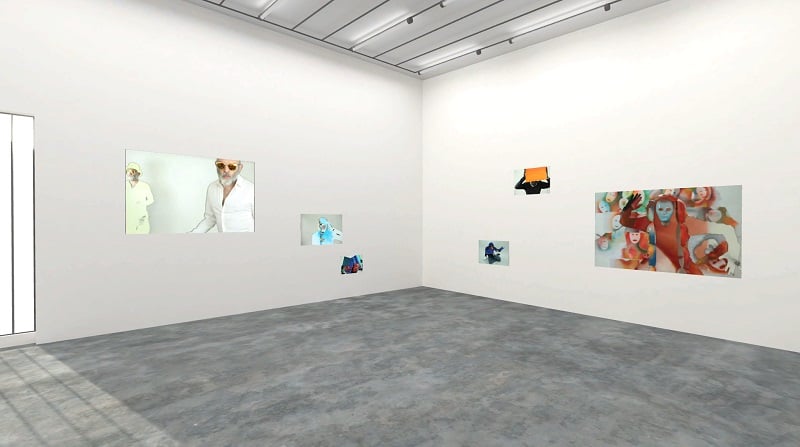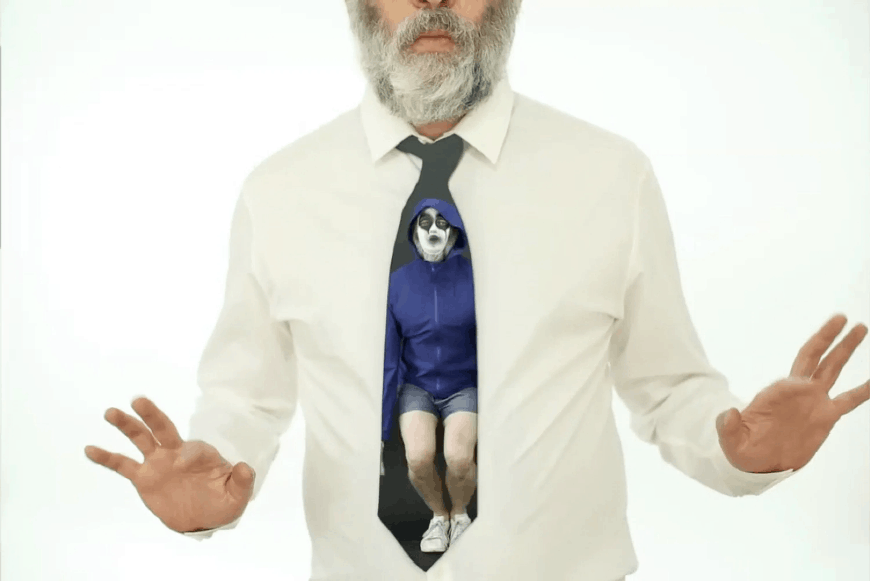Interviews
Artland VRooms Highlights.
Interview with NILS STÆRK, Copenhagen

On the occasion of the gallery’s second virtual reality exhibition created with Artland VRooms, we had the pleasure of speaking with Gustav Stærk from Copenhagen-based gallery NILS STÆRK to discuss the evolution of the MELLEMRUMMET project from physical to virtual space; the current VR exhibition featuring works by Mexican artist Carlos Amorales; VR technology as a means of creating groundbreaking art experiences; and much more.
Last spring, Nils Stærk launched MELLEMRUMMET, a new virtual project space re-enacting a former exhibition space to share new works and projects from around the world. The title, MELLEMRUMMET, literally designates ‘the space in between’; can you elaborate on the concept and history of the project, from physical exhibition space to virtual platform?
MELLEMRUMMET started in 2009 at the gallery’s former location on Ny Carlsberg Vej in Copenhagen. The space was physically placed between the main exhibition space and the gallery office, and it was therefore named MELLEMRUMMET, meaning ‘the space in between’. From there, the concept of MELLEMRUMMET evolved as artists represented by the gallery, as well as other artists from around the world, started to show smaller solo exhibitions in the space. The exhibitions were often project-based – sometimes one work would be presented alone – so the concept and meaning of MELLEMRUMMET also became the exhibition space in between bigger shows in the main room. The gallery represents 20 artists and shows around four solo exhibitions a year, which means that, for an artist, sometimes years can pass between solo presentations in the main space. Throughout this time, artists develop and work on many great projects and works. Thus, MELLEMRUMMET became an opportunity to present their development and projects in between the big solo exhibitions.
In 2017, when the gallery moved to Glentevej in the Northwest part of Copenhagen, MELLEMRUMMET couldn’t follow in its former physical form. However, the opportunity to create a virtual edition of the space occurred, and we re-launched MELLEMRUMMET (version 2.0) as a virtual version of the original exhibition space last spring. With MELLEMRUMMET’s new format, ‘the space in between’ became a platform halfway between the artist’s studio and the physical gallery exhibition, a means to bring the audience closer to the artist’s domain and work processes. Four virtual exhibitions are presented annually, and one or two pop-up exhibitions are arranged at selected locations both in Denmark and abroad in connection with each show. Visitors can explore and acquire works from these exhibitions directly from the gallery’s website, ARTLAND, and via the various pop-up exhibitions.
Following the first virtual exhibition presenting a selection of works by Gert & Uwe Tobias, MELLEMRUMMET currently houses THE AMORALES BROTHERS, a solo show by Carlos Amorales. Can you tell us a bit more about the artist and his exhibition?
Carlos Amorales is a multidisciplinary artist who explores the limits of language and translation systems to venture into the field of cultural experimentation. He uses graphic production as a tool to develop linguistic structures and alternative working models that allow new forms of interpretation and foster collectivity.
The exhibition THE AMORALES BROTHERS reflects on his preoccupation with themes such as language, representation, and improvisation as a working method through performance and video production. As the exhibition title suggests, the video installation shows various studio recordings of him through images that are sometimes digitally staggered. Recorded single-handed on ZOOM interfaces, the fragmented imagery conveys a current state of mind reverting to essentials and uses what is at hand. His interest in ambiguity and shades of meaning relates to everyday human experience, where certainty is not always guaranteed. Through work titles such as Dancing Tie, Township Mask Dance, and iPhone Mouth, he reflects upon classical themes such as the body and the artist’s studio – a physical as well as a mental experience that drops you off somewhere in between the fictional and the real world. In addition to this experience, he’s produced new collages and paintings to be shown exclusively physically, creating a united exhibition consisting of two presentations in relation to each other: one in VR and one physical, presented in pop-up shows. By doing that, he’s creatively used VR technology to add another dimension to his exhibition.

Have you approached the conception and mounting of VR exhibitions any differently compared to the ones in real life? If yes, how do the two processes differ from one another?
When it comes to the content created and the curational process behind mounting the works/installations, we’ve in many ways approached the exhibitions in MELLEMRUMMET the same way as our physical exhibitions. On top of the VR exhibitions, it’s been very important for us to show the works in real life as well. We’ve therefore presented the works physically as pop-up shows like a normal exhibition – the Covid-19 pandemic has made it difficult so far to host openings of the pop-up exhibitions, but in the future we aim to host both openings and events during the pop-up shows as we do with our main gallery exhibitions.
Adapting to the circumstances, we’ve focused instead on creating additional content for the MELLEMRUMMET exhibitions we’ve hosted so far. Recently, we presented a video by Gert & Uwe Tobias’ in their Cologne studio showing their process towards creating the works, allowing VR visitors to get to know the artists better and learn about their different approaches to material, mediums etc. This also reflects MELLEMRUMMET’s new position as a virtual ‘space in between’ the artist’s studios and the gallery.
Do you work towards creating synergy between your main physical gallery space in the industrial Northwest part of Copenhagen and MELLEMRUMMET? If so, how is this reflected in your program?
I don’t think we are trying to create a connection between the physical gallery and the virtual space. On the contrary, MELLEMRUMMET has opened up the possibility of getting out of the gallery without going to an art fair. Therefore, it is precisely the synergy between the virtual space and the physical pop-up events that results in the effects we aim to achieve.
What is the gallery program for the rest of the year? Any upcoming exhibitions you can share with us?
We are currently presenting an exhibition by SUPERFLEX. Entitled Like a Force of Nature, the show features two artworks that explore the almost ecstatic disorientation produced by the intricacy of the natural world and the dizzying economic systems that are rapidly altering that world in immeasurable ways. Today, when many rituals of surrender have been lost, surrendering to nature or economy can feel like a mystical experience, an encounter with the ungraspable. The show will be on view until October 16, 2021.
On October 29, 2021, we are very excited to present a solo exhibition by Swedish artist Paul Fägerskiöld. We look very much forward to announcing more about the show and presenting his great works in the gallery for the first time. The third exhibition in MELLEMRUMMET will also soon be announced as well as upcoming pop-up events in Denmark.
The past year has massively transformed the way cultural institutions approach digital resources and technologies. What considerations should galleries undertake in such art and tech crossovers? Has VR technology proved to be an enabling opportunity to your gallery, adding another dimension to the art experience?
VR technology has created new opportunities to show artworks and presentations. For us, this has meant the chance to re-launch MELLEMRUMMET and create a space to present new projects by the artists. As mentioned earlier, it has also allowed creating new content about the artists, giving people further insights into their working process and domain. However, we’ve also experienced that it’s difficult to present artworks online as in-person interactions are missing. The missing element of direct communication makes the experience different since the opportunities to ask questions and share impressions don’t exist in the same way as when you go to an opening or an art fair to experience new art alongside other people. Also, the visual element is diverse as many artworks appear differently when you stand directly in front of them instead of looking at them on a computer screen – especially size and details can be difficult to experience in the same way virtually. So, you need to consider what type of works to present online.
However, VR technology can also be used creatively and add another dimension to the art experience. As previously mentioned, Carlos Amorales has worked with this in his current exhibition, THE AMORALES BROTHERS, creating works to be exclusively shown either virtually or physically. Altogether, the virtual and the physical presentations create a unique exhibition and art experience. I think this is a great example of a crossover between art and tech and shows how VR technology can work as an element to create a new exhibition format combining online and physical installations into a united, multidimensional art experience.
Relevant sources to learn more
Nils Stærk – Gallery website
Interested in creating your own high-quality VR exhibition? Learn more here.
Wondering where to start?


